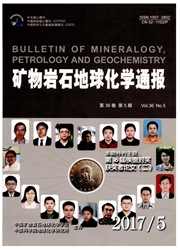

 中文摘要:
中文摘要:
为了研究天然赤铁矿对微生物胞外电子传递机制,以长沙和海口红壤为例,构建了双室反应体系对红壤微生物与天然赤铁矿间氧化还原作用及胞外电子传递过程进行表征。研究显示,增加赤铁矿作为电子受体后,长沙与海口红壤体系开路电压由425.28、414.64 m V提升至511.46、532.52 m V,最大输出功率由221.5、171.0 m W/m3提升至431.4、260.2 m W/m3。电化学循环伏安测试显示在0.43、0.55 V(相对于饱和甘汞电极;vs.SCE)处出现Fe(Ⅲ)还原峰及Fe(Ⅱ)氧化峰,指证新氧化还原反应的引入。电化学阻抗谱(EIS)拟合结果显示赤铁矿电极极化内阻Rp自44840Ω降至665Ω,从动力学层面表明电极反应导致的电势降低有利于电子转移。实验研究结果表明,红壤环境中以赤铁矿为代表的铁氧化物能够有效参与并促进微生物胞外电子传递。
 英文摘要:
英文摘要:
In this paper, a dual-chamber reactor was built to study the mechanism of redox reaction and electron transfer process between microorganisms and natural hematite in red soils in Changsha and Haikou. With the increase of hematite as electron acceptor, the open circuit voltages of Changsha and Haikou red soils were increased from 425.28, 414.64 mV to 511.46, 532.52 mV, respectively; and their maximum output powers were increased from 221.5, 171.0 mW/m3 to 431.4, 260.2 mW/m3, respectively. Electrochemical cyclic vohammetry tests show that there are Fe( Ⅲ )reduction peak at 0.43 V and Fe( Ⅱ)oxidation peak at 0.55 V(vs. saturated calomel electrode; SCE) , implying that a new redox reaction was introduced. Electrochemical impedance spectroscopy (EIS)fitting results indicate that the electrode polarization resistance(Rp) of hematite was decreased from 44840 12 to 665 12. On the aspect of dynamics, this indicates that the decrease of electric potential resulted from the electrode reaction is favorable for the electron transfer. Experimental results indicate that the hematite, representative of natural iron oxides in red soil, can effectively participate in and significantly promote the process of extracellular electron transfer.
 同期刊论文项目
同期刊论文项目
 同项目期刊论文
同项目期刊论文
 期刊信息
期刊信息
